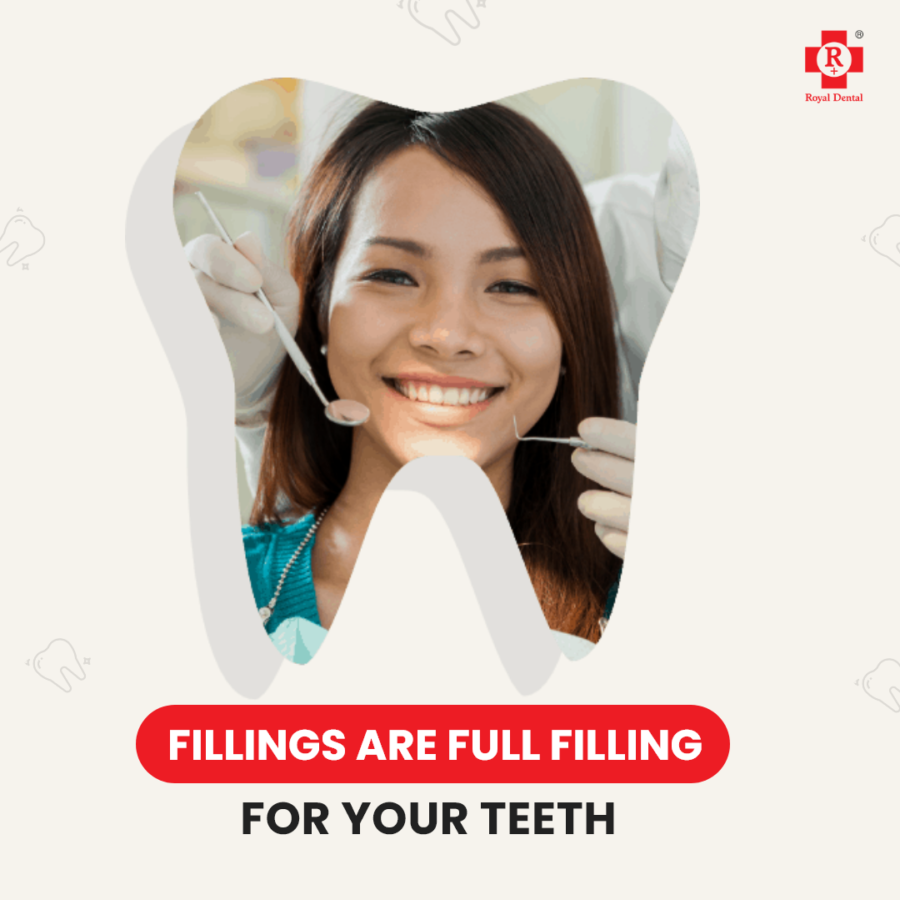Have you ever wondered what goes on behind the scenes when you visit your dentist? While most of us are familiar with the routine check-ups, cleanings, and fillings, there is a fascinating world of oral treatments that dentists undergo to provide the best care for their patients. In this article, we will unlock the secrets and take a closer look at the lesser-known dental treatment procedures that dentists perform. From root canals to orthodontic treatments, dental professionals undergo rigorous training and acquire specialised skills to address a wide range of oral health concerns. By understanding the intricacies of these treatments, you will gain a deeper appreciation for the expertise and dedication that dentist bring to their profession. So, join us on this journey as we explore the hidden world of oral treatments and discover the secrets that keep our smiles healthy and bright.
Importance of Oral Treatments for Dentist
Oral treatments play a crucial role in the field of dentistry. Dentists are not only responsible for ensuring the overall health of your teeth and gums but also for diagnosing and treating various dental conditions. These treatments go beyond the surface-level procedures and delve into the deeper aspects of oral health. Dentists undergo extensive training to acquire the knowledge and skills necessary to perform these treatments effectively. By addressing oral health concerns, dentists help prevent further complications and improve the quality of life for their patients.
One of the primary reasons why oral treatments are essential is the impact they have on overall health. Poor oral health can lead to a range of systemic diseases, including cardiovascular problems, diabetes, and respiratory infections. By providing comprehensive oral treatments, dentist contribute to the overall well-being of their patients.
Furthermore, oral treatments can also have a significant impact on a person’s self-esteem and confidence. A healthy and beautiful smile can boost self-confidence and improve social interactions. Dentist play a vital role in enhancing the aesthetics of their patients’ smiles through various treatment options. Now that we understand the importance of oral treatments, let’s dive into the different types of dental treatment performed by dentists.
Types of Oral Treatments performed by Dentist
Dentists are trained to perform a wide range of oral treatments to address various dental conditions. These treatments can be broadly categorized into preventive, restorative, and cosmetic dentistry. Let’s take a closer look at each of these categories.

Preventive Dentistry
Preventive dentistry focuses on maintaining oral health and preventing the onset of dental problems. This includes routine check-ups, cleanings, and oral hygiene education. Regular dental visits allow dentists to identify and address any potential issues before they escalate into more significant problems. Dentists also provide guidance on proper brushing and flossing techniques, as well as the importance of a balanced diet for optimal oral health.

Restorative Dentistry
This dentistry involves repairing and restoring damaged or missing teeth. This can include procedures such as fillings, crowns, bridges, and dental implants. Dentist use restorative treatments to address tooth decay, fractures, or tooth loss caused by accidents or other dental conditions. These treatments aim to restore the function and aesthetics of the teeth, allowing patients to eat, speak, and smile with confidence.
Cosmetic Dentistry

Cosmetic dentistry focuses on improving the appearance of the teeth and smile. It includes treatments such as teeth whitening, veneers, and orthodontic procedures. Dentists use cosmetic treatments to enhance the color, shape, alignment, and overall aesthetics of the teeth. These treatments can have a significant impact on a person’s self-esteem and confidence, as they help create a beautiful and radiant smile.
Oral Health Statistics for Dental Treatments
Oral health is a global concern, with millions of people suffering from dental problems. According to the World Health Organization (WHO), oral diseases affect nearly half of the world’s population. Tooth decay, gum diseases, and oral cancers are among the most prevalent oral health issues. These statistics highlight the need for dental treatments and the importance of oral health awareness.
Dental treatments address these oral health concerns by providing preventive measures, early diagnosis, and effective treatment options. Regular dental check-ups and cleanings can help prevent tooth decay and gum diseases. Early detection and treatment of oral cancers can significantly improve the chances of successful outcomes. By understanding the statistics and the need for dental treatments, we can appreciate the efforts dentists put into providing comprehensive oral care.
Training Dentists to undergo Oral Treatments
Becoming a dentist requires years of education and training. Dentists undergo a rigorous academic curriculum to acquire the necessary knowledge and skills to perform oral treatments. The journey to becoming a dentist typically starts with a bachelor’s degree in a science-related field. After completing their undergraduate studies, aspiring dentists must pass the Dental Admission Test (DAT) to gain admission to dental school.
Dental school typically lasts for four years and includes a combination of classroom lectures, laboratory work, and clinical training. During this period, students learn about various dental procedures, oral anatomy, dental materials, and patient care. They also gain hands-on experience by treating patients under the supervision of experienced faculty members. After graduating from dental school, dentist may choose to specialize in a specific area of dentistry by completing a residency program.
Specialized training allows dentists to acquire advanced skills and knowledge in areas such as orthodontics, endodontics, periodontics, oral surgery, and prosthodontics. This additional training equips dentists with the expertise to perform complex oral treatments and address specific dental conditions. Now that we understand the education and training dentists undergo, let’s explore the common challenges they face during oral treatments.
Challenges faced by Dentist during Oral Treatments
Patient Anxiety
Many patients experience dental anxiety or fear, which can make it difficult for dentists to perform treatments. Dentists need to have excellent communication and interpersonal skills to help patients feel comfortable and at ease during their appointments. They may use techniques such as sedation dentistry or distraction techniques to alleviate patient anxiety.
Complex Dental Conditions
Some dental conditions can be complex and require advanced treatment techniques. Dentist must stay updated with the latest advancements in dentistry to effectively address these conditions. They may need to collaborate with specialists or refer patients to specialized dental centers for complex cases.
Time and Efficiency
Dentists often face time constraints when performing oral treatments. They need to balance providing high-quality care with managing their schedules effectively. Time management and efficient treatment protocols are crucial to ensure that patients receive timely and effective oral treatments.
Patient Compliance
Best Practices by Dentist for Successful Oral Treatments
Comprehensive Examination and Diagnosis
Dentists perform a comprehensive examination and diagnosis before recommending any treatment. This includes evaluating the patient’s oral health, taking X-rays or scans, and discussing the patient’s concerns and expectations. By thoroughly understanding the patient’s needs, dentists can create a personalized treatment plan.
Treatment Planning and Communication
Dentists develop a detailed treatment plan based on the examination and diagnosis. They communicate the treatment options, benefits, risks, and costs to the patient, ensuring they make informed decisions. Clear communication helps establish trust and ensures that patients have realistic expectations.
Infection Control and Sterilisation
Infection control is a top priority for dentists. They follow strict protocols to prevent the spread of infections. This includes using sterilized instruments, disposable materials, and maintaining a clean and safe environment. Dentists also educate their patients on the importance of infection control and proper oral hygiene practices.
Pain Management
Dentists employ various pain management techniques to ensure a comfortable experience for their patients. Local anesthesia is commonly used to numb the area being treated. For patients with dental anxiety or complex cases, dentists may offer sedation dentistry options to help them relax throughout the procedure.
Utilization of Advanced Technologies
Advancements in dental technology have revolutionized oral treatments. Dentists utilize tools such as digital X-rays, intraoral cameras, and CAD/CAM systems to enhance diagnosis and treatment planning. These technologies provide dentists with detailed information and improve the precision and efficiency of their treatments.
Innovations and Advancements in Oral Treatments
The field of dentistry has witnessed significant advancements in recent years, thanks to technological innovations. These advancements have improved the accuracy, efficiency, and comfort of oral treatments. Let’s take a look at some of the notable innovations in oral treatments:
Digital Dentistry
Digital dentistry involves the use of digital technologies for various aspects of oral treatments. This includes digital impressions, computer-aided design and manufacturing (CAD/CAM) systems, and 3D printing. Digital dentistry allows for more precise treatment planning, faster production of dental restorations, and improved patient comfort.
Laser Dentistry
Laser technology has revolutionized oral treatments by providing precise and minimally invasive procedures. Lasers are used in various dental procedures, including gum disease treatment, cavity preparation, and teeth whitening. Laser dentistry offers several benefits, such as reduced bleeding, faster healing, and minimal post-operative discomfort.

Dental Implants
Tooth implants have become a popular treatment option for replacing missing teeth. Implants provide a long-term solution that mimics the natural tooth structure. Advancements in implant materials and techniques have improved the success rates and aesthetics of dental implant treatments.
Invisible Orthodontics
Orthodontic treatments have evolved with the introduction of invisible aligner systems such as Invisalign. These aligners offer a discreet and convenient alternative to traditional braces. They are custom-made and virtually invisible, allowing patients to straighten their teeth without the use of metal wires and brackets.
Minimally Invasive Techniques
Minimally invasive techniques aim to conserve healthy tooth structure and minimize patient discomfort. These techniques include air abrasion, which uses a stream of particles to remove decay without the need for drilling, and micro dentistry, which uses magnification and specialised instruments to perform precise and conservative treatments.
Oral Treatment Options for Different Dental Conditions
- Preventive Treatments: Regular dental check-ups, cleanings, and fluoride treatments are essential for preventing dental issues. Dentists also provide dental sealants to protect the teeth from decay, especially in children.
- Restorative Treatments: Dentists use various restorative treatments to repair damaged or decayed teeth. These include fillings, crowns, bridges, and dental implants. These treatments restore the function and aesthetics of the teeth.
- Orthodontic Treatments: Orthodontic treatments, such as braces or clear aligners, are used to correct misaligned teeth and jaw alignment issues. These treatments help to improve the bite and enhance the appearance of the teeth.
4. Periodontal Treatments: Dentists specialize in treating gum diseases such as gingivitis and periodontitis. Scaling and root planning, antibiotic therapy, and surgical interventions may be necessary to address advanced gum disease.
5. Cosmetic Treatments: Cosmetic dentistry focuses on enhancing the appearance of the teeth. Dentists offer treatments such as teeth whitening, veneers, and gum contouring to improve smiles and boost confidence.
6. Oral Surgeries: Dentists perform various oral surgeries, including tooth extractions, wisdom tooth removal, dental implant placement, and jaw surgeries. These procedures are often necessary to treat complex dental conditions.
Oral Treatment Costs and Insurance Coverage
The cost of oral treatments can vary depending on several factors, including the type of treatment, the complexity of the case, and the geographic location. Dental insurance coverage can help offset some of these costs. Dental insurance plans typically cover preventive treatments, such as routine check-ups and cleanings, to encourage regular dental care. However, coverage for restorative and cosmetic treatments may vary.
It is essential for patients to understand their dental insurance coverage and any out-of-pocket expenses they may incur for oral treatments. Dentists often work closely with patients to discuss treatment costs, provide payment options, and help maximize insurance benefits. Some dental practices also offer in-house financing or partner with third-party financing companies to make oral treatments more affordable for their patients.
Conclusion
As we have explored in this article, oral treatments are an integral part of dentistry. Dentists undergo extensive education and training to provide comprehensive oral care to their patients. From restorative treatments to orthodontic procedures, dentists employ various techniques and technologies to ensure successful outcomes. The field of dentistry continues to evolve, with advancements in technology and dental treatment options. Digital dentistry, 3D printing, and laser dentistry are just a few examples of the innovative approaches that are shaping the future of oral treatments. These advancements aim to improve treatment outcomes, reduce treatment times, and enhance patient comfort. Skilled dentists and dental care are needed as oral health becomes more important. To prevent and treat dental diseases, people must prioritize oral health and have regular dental checkups.
© All rights reserved by Royal Dental Implants Pvt Ltd
Issued in public interest






